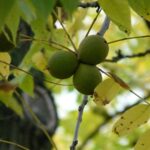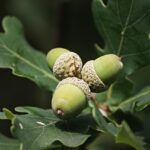Silver Leaf Maple Tree Facts: Growth, Care & Tips
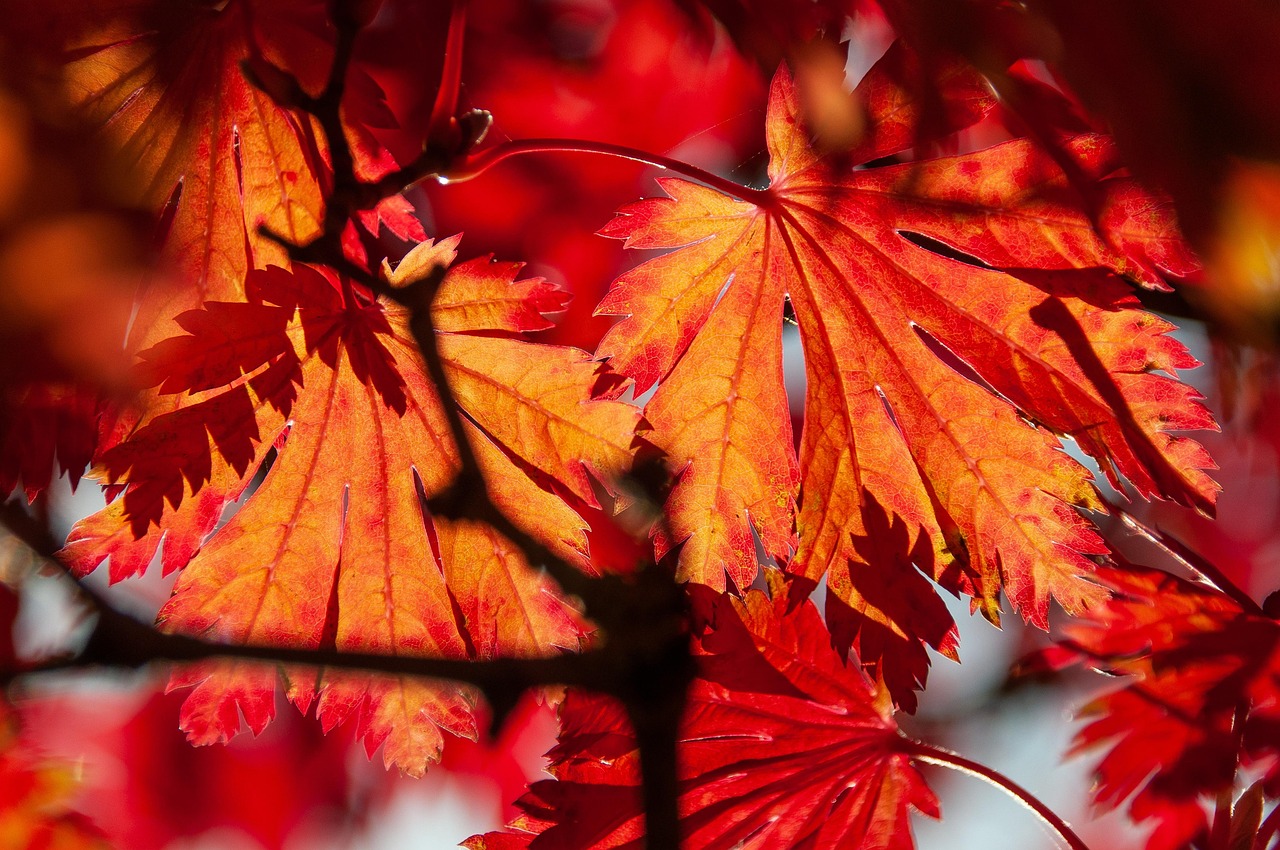
I’ve been looking into the silver leaf maple tree facts for an article I’m writing, and it’s quite an interesting tree. Known scientifically as Acer saccharinum, this tree is native to eastern North America and is a popular choice for many yards. It’s recognized for its fast growth, distinctive silvery undersides of its leaves, and the fun ‘helicopters’ it produces. I’ll share some of the key details I’ve gathered about its growth, care, and what you should consider before planting one.
What Is a Silver Maple? Species Overview & Key Traits
When I first started looking into trees for my yard, the silver maple (Acer saccharinum) really caught my eye. It’s a pretty distinctive tree, known for its rapid growth and those lovely leaves that have a silvery underside, which is where it gets its common name. You can often spot them in parks or along streets because they grow so fast and can get quite large.
One of the most noticeable things about a silver maple is its leaves. They’re deeply cut, almost like fingers, and have those two-toned colors – green on top and that pale, silvery-white underneath. When the wind blows, it shows off that lighter color, creating a shimmering effect. It’s quite a sight, especially compared to something like a sugar maple, which has a more uniform leaf color. The leaves also turn a nice yellow, sometimes with hints of red, in the fall, though it’s not as dramatic as some other maples.
Here are some of the key characteristics I found:
- Scientific Name:Acer saccharinum
- Common Names: Silver maple, soft maple, creek maple, river maple, white maple, water maple
- Native Range: Eastern North America
- Mature Size: Typically 50-100 feet tall with a spread of 40-60 feet wide.
- Leaf Appearance: Deeply lobed, 5-lobed, with serrated edges. The upper surface is green, while the underside is silvery-white.
- Bark: Smooth and light gray on young trees, developing into shaggy, loose plates as it matures.
I learned that while they grow quickly, this can sometimes mean weaker wood compared to slower-growing trees. It’s something to keep in mind when deciding where to plant one.
These trees are adaptable, too. They can handle a range of soil types, even wetter spots, which makes sense given their native habitat often includes floodplains and riverbanks. They generally prefer full sun but can tolerate some shade. It’s a popular choice for a reason, offering a lot of visual appeal without demanding too much fuss, though you do need to be aware of its vigorous root system and fast growth when planning its placement.
Natural Habitat & Climate Adaptation
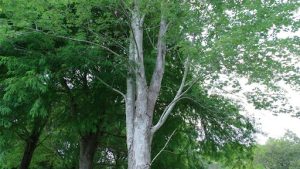
When I look into where the silver maple tree naturally likes to grow, I find it’s quite adaptable. Its native range is across much of southern Canada and the eastern United States. You’ll often spot them hanging out in floodplains, along riverbanks, or in woodlands where the ground tends to be a bit wetter. This tree isn’t too fussy about soil types, which is a big plus, and it can handle a wide variety of climates.
It seems to prefer areas with cool springs and falls, cold winters, and warm, wet summers, like those found along the eastern seaboard. However, it’s been planted in Europe since the 1700s and has shown it can do well even in less ideal spots. Its ability to grow in wet conditions and even poorer soils means it might even help with some environmental issues in certain areas.
Here’s a quick rundown of what it generally prefers:
- Sunlight: Full sun is best for vibrant foliage and good fall color, though it tolerates partial shade.
- Soil: Prefers moist, well-draining soil, especially those with some organic material, like the silty soil of floodplains. It doesn’t do well in dry soil.
- Water: While established trees are fairly drought-tolerant, young ones need consistent watering for the first couple of years.
- Temperature: It’s hardy in USDA zones 3 through 9, meaning it can handle quite a bit of cold.
Because of its preference for moisture and its fast growth, it’s important to consider where you plant it. While it’s tough, putting it in a very dry or exposed, windy location might not be its favorite spot, even though it can survive there.
Growth Patterns
When I look at a Silver Maple, I’m always struck by how quickly it seems to shoot up. These trees are known for their rapid growth, often adding between 3 and 7 feet in height each year, especially when they’re young and have good sunlight and moisture. It’s not uncommon for them to reach their full height, typically between 65 and 80 feet, though some can get as tall as 115 feet, within just 10 to 20 years. This fast growth makes them a popular choice if you want a mature-looking tree relatively quickly.
I’ve noticed that their lifespan usually falls between 100 and 130 years. While they grow fast initially, that pace does slow down as they get older. It’s interesting to consider how this affects their overall presence in a landscape over time.
| Growth Stage | Typical Height Gain Per Year |
| Seedling | 1-3 feet |
| Young Tree | 3-7 feet |
| Mature Tree | Slows considerably |
One thing to be aware of, and something I’ve learned from experience, is their root system. Silver Maples develop wide, shallow roots that can spread quite a bit. You’ll often see them becoming exposed in lawns, which can sometimes be a bit of a tripping hazard or make mowing tricky. It’s important to keep this in mind when deciding where to plant one, as those roots can also interfere with sidewalks or foundations if planted too close.
It’s important to remember that their vigorous growth can sometimes mean they outcompete other plants if you’re planting a mixed stand. I learned this the hard way when my Silver Maple overshadowed some slower-growing shrubs I had put in at the same time.
Silver Maples can start producing seeds as early as 11 years old. These seeds, often called ‘helicopters’ because of how they spin as they fall, are a distinctive feature. If you’re interested in collecting seeds, it’s best to do so quickly after they start falling, as they don’t stay viable for long if they dry out. For anyone looking to establish a new maple tree quickly, the Silver Maple’s growth rate is certainly a major advantage.
Ideal Soil, Sunlight & Watering Needs

When I’m thinking about where to plant a silver maple, I always consider its preferences for light and soil. These trees do best when they get a good amount of sun. Aim for a spot that receives at least six hours of direct sunlight each day. While they can handle some shade, they won’t grow as full or look as vibrant. Think of it like this: more sun, happier tree.
As for soil, silver maples aren’t too picky, but they do have a preference. They like soil that stays moist but also drains well. They’re adaptable and can handle clay, loam, or silt, as long as it doesn’t dry out completely. I’ve noticed they don’t do well in dry conditions, which makes sense given their natural habitat often involves floodplains. If your soil is a bit on the dry side, adding some compost when you plant can help it hold onto moisture.
Watering is straightforward, especially once the tree is established. For the first couple of years, I make sure to water them about once a week. A good rule of thumb is to give them 2 to 3 gallons of water for every inch of trunk diameter. After that, they’re usually good to go and can handle whatever nature throws at them, rain-wise. It’s important to get those roots settled in properly during those early stages.
It’s interesting how these trees adapt. They can handle a range of climates and even humidity, but they seem to appreciate the cooler springs and falls, and wet summers that you find in places like the eastern seaboard. It’s all about finding that balance for them.
When it comes to feeding them, I usually skip the fertilizer. Silver maples grow fast enough on their own, and adding extra fertilizer can sometimes lead to weaker wood, which is the last thing you want with these trees. If you’re concerned about your soil, a simple soil test can tell you if there’s a specific nutrient deficiency, but generally, a bit of organic mulch is all they need. It’s all about letting them grow naturally. If you’re curious about growing your own, you can find information on growing maple trees from seed.
Planting Tips
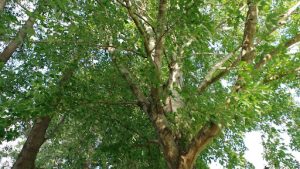
When I’m thinking about planting a silver maple, the first thing I consider is where it’s going to go. These trees do best with full sun, meaning about six hours of direct sunlight each day. If you put it in a spot with only partial shade, it might not grow as well and could end up looking a bit lopsided. I also try to pick a spot that’s a bit sheltered, not somewhere constantly battered by strong winds, especially if I want to enjoy its fall colors.
As for when to plant, I’ve found that late fall or early winter is usually the sweet spot, as long as the ground isn’t frozen solid. This gives the roots a chance to settle in with the cooler, moister weather before the heat of summer arrives. Spring planting is also a good option, especially for bare-root trees, as it allows them to establish before the growing season gets too intense. Planting maple trees in spring or fall offers the best chance for root establishment due to moderate temperatures.
When I prepare to plant, I make sure to loosen the soil around the planting area quite a bit. Then, I dig a hole that’s wide enough to comfortably fit the root ball without cramming it in. After placing the tree, I backfill with the soil, gently firming it down to get rid of air pockets. Giving it a good watering right after planting is key.
Here’s a quick rundown of what I usually do:
- Prepare the planting hole: Make it wider than the root ball, but not necessarily deeper.
- Place the tree: Ensure the top of the root ball is level with the surrounding soil.
- Backfill and water: Gently firm the soil and water thoroughly to help settle it.
- Mulch: Adding a layer of compost around the base can help keep the soil moist.
I’ve learned that giving young trees a little support with staking can be helpful, especially in exposed areas, but I always make sure to remove the stakes after a year or so. It’s also a good idea to keep an eye out for any young seedlings that might pop up nearby, as they can compete for water and nutrients.
For the first year, regular watering is important, especially during dry spells. I usually aim for about once a week, but I always check the soil moisture first to avoid overwatering, which can lead to root problems. Thankfully, silver maples aren’t usually fussy about fertilizer; a bit of compost when planting is often all they need. I also try to keep an eye on the tree’s overall health, checking for any signs of trouble that might need addressing.
Maintenance: Pruning, Fertilising & Managing Weak Branches
Keeping a Silver Maple healthy and looking its best involves a few key maintenance tasks. I’ve found that regular attention, especially when the tree is young, pays off down the line.
Pruning is probably the most important thing to get right. The best time to do this is usually in late winter or early spring, before the tree starts putting on new growth. This is when the tree is dormant, so it handles the cuts better. My goal when pruning is to remove anything that’s dead, diseased, or broken. I also look for branches that are rubbing against each other or growing at awkward angles. Removing these weak or crossing branches helps the tree direct its energy into stronger growth and can prevent future problems. It’s also a good idea to thin out the canopy a bit if it looks too dense, allowing sunlight to reach more of the tree. Just remember, Silver Maples aren’t the best at healing big wounds, so it’s better to make small, corrective cuts early on rather than waiting for major issues.
When it comes to feeding your tree, a little bit of fertilizer in early spring, right before the buds start to swell, can give it a good boost. This helps it absorb the nutrients when it needs them most for new growth. I usually go with a balanced fertilizer, but it’s always good to check what your local garden center recommends for your specific soil type.
Watering is straightforward. When the soil feels dry, give it a good soak, but be careful not to overdo it. Soggy roots are no good. The first year after planting is the most critical for regular watering, about once a week, depending on how much rain you get. After that, they’re usually self-sufficient unless you’re going through a serious dry spell.
I also make it a point to keep an eye out for any signs of trouble, like unusual spots on the leaves or little bumps that might indicate pests. Catching these things early makes them much easier to deal with.
It’s about being observant. A quick walk around the tree every so often can tell you a lot about its health and what it might need. Don’t overthink it; just be present with your tree.
Common Pests, Diseases & Other Challenges
While the silver maple is a beautiful tree, I’ve found it can present a few issues that are good to be aware of before planting. One of the main things I’ve noticed is its tendency to produce a lot of seedlings. These little guys can pop up all over the yard, and if you’re not careful, you’ll have a forest of young maples before you know it. It’s a good idea to either pull them up when you see them or consider a cultivar like ‘Silver Queen’ if you want to avoid this.
Another common problem I’ve encountered relates to the tree’s structure. The branches can sometimes be a bit weak, making them prone to breaking, especially in high winds or when heavy ice or snow accumulates. This means I have to be mindful of where I plant it, avoiding areas where falling branches could cause damage. I’ve also seen that the roots can be quite shallow and aggressive. They have a habit of spreading out and can lift sidewalks or driveways over time, which is definitely something to consider if you’re planting near paved areas.
As for diseases, I’ve learned that silver maples can be susceptible to a few things. Verticillium wilt is one that can be serious, causing wilting and even sudden death in some cases. I’ve also seen occasional issues like gray mold spots or tar spots on the leaves, and sometimes aphids can show up. Thankfully, most of these aren’t usually a major threat to a healthy, established tree, but it’s good to keep an eye out.
Here’s a quick rundown of what I’ve observed:
- Seedlings: Expect volunteers to sprout readily. Stay on top of them or choose a non-seeding variety.
- Branch Strength: Branches can be brittle; avoid planting where falling limbs are a hazard.
- Root System: Shallow roots can disrupt hardscaping like patios and walkways.
- Diseases: Watch for signs of Verticillium wilt, though minor leaf spots are common and usually not a big deal.
It’s important to remember that while these issues exist, they don’t necessarily mean you should avoid silver maples altogether. With proper placement and a little attention, many of these challenges can be managed effectively. I always try to think about the long-term implications before I put a tree in the ground.
Best Uses, Cultivars & What to Consider Before Planting
When I think about planting a silver maple, I always consider where it’s going to end up. These trees grow fast and get big, so you need to give them plenty of room. They aren’t the best choice for smaller yards or tight urban spaces. Their roots can be a bit aggressive, sometimes lifting sidewalks or driveways, and their branches can break in strong winds or heavy ice. So, picking the right spot is super important.
If you’ve got the space, though, they can be great. They’re often used as shade trees, and their fast growth means you get that shade quickly. They can also be planted in open parkland areas where they have room to spread out. Some people even like to grow them for their seeds, those little “helicopters” that fly around. You can even try growing your own from seed, though it can be a bit tricky to get them to sprout.
There are a few different types, or cultivars, of silver maple you might come across:
- Acer saccharinum ‘Beebe’: This one has branches that droop a bit.
- Acer saccharinum ‘Blair’: They tried to make this one with stronger wood, but the branches still break easily.
- Acer saccharinum ‘Silver Queen’: A good pick if you don’t want to deal with seedlings popping up everywhere, as this one doesn’t produce seeds.
- Acer saccharinum ‘Weiri’: This variety has smaller, cut leaves and drooping branches.
- Acer saccharinum ‘Skinneri’: It has a big, weeping, pyramid shape.
- Acer x fremanii: This is actually a hybrid, a mix of red maple and silver maple, so you get some of the red maple’s color with the silver maple’s fast growth.
When planting, especially when the tree is young, it’s a good idea to have an arborist help prune it. They can train it to grow with a strong shape. Later on, you’ll want to keep an eye on it and prune out any branches that are weak, damaged, or growing the wrong way. It’s best to do this in late winter or early spring. Remember, these trees don’t heal from wounds very well, so getting the pruning right when they’re young is key to avoiding problems down the road.
If you’re thinking about planting one, make sure you have the right conditions. They like full sun to partial shade and moist, well-draining soil. Don’t forget to water them regularly when they’re getting established. It’s also worth noting that while they can tolerate some dry spells once they’re older, they do best with consistent moisture. You can find more information on silver maple seed pods if you’re interested in their reproduction.
Frequently Asked Questions
What makes the Silver Maple tree special?
I find the Silver Maple to be quite a striking tree. Its leaves are a lovely green on top, but the undersides are a beautiful silvery-white, which shimmers when the wind blows. It’s also known for its fast growth and the fun, helicopter-like seeds it produces.
How big does a Silver Maple tree get, and how long does it live?
When I look at a mature Silver Maple, I expect it to be quite tall, usually between 50 and 100 feet. Its branches can spread out quite a bit, too, often 40 to 60 feet wide. These trees are generally long-lived, often reaching ages of 100 to 130 years.
What are the best conditions for planting a Silver Maple?
From my experience, Silver Maples prefer a spot with full sun, meaning at least six hours of direct sunlight each day. They also like soil that stays moist but drains well, much like the floodplains where they naturally grow. They’re not fans of dry soil.
Do I need to fertilize my Silver Maple?
In my opinion, it’s best to skip the fertilizer for Silver Maples. They already grow very quickly, and adding fertilizer can make their wood weaker, leading to more problems with breaking branches. If the soil is a bit poor, a little compost when planting or as a top dressing each year should be plenty.
What are some common problems I might encounter with a Silver Maple?
I’ve learned that while they grow fast, Silver Maples can have weaker branches that might break in strong winds or heavy ice. Their roots can also be a bit shallow and might push up sidewalks or driveways. Some diseases can affect them, like sapstreak or verticillium wilt, and they can also get brown leaf tips if they don’t get enough water.
Are there different types of Silver Maple trees?
Yes, I know there are several varieties, or cultivars, of Silver Maple that have been developed. Some, like ‘Pyramidale,’ have a more upright shape, while others, like ‘Laciniatum Wieri,’ have drooping branches and more deeply cut leaves. These different types can offer slightly different looks or strengths.

